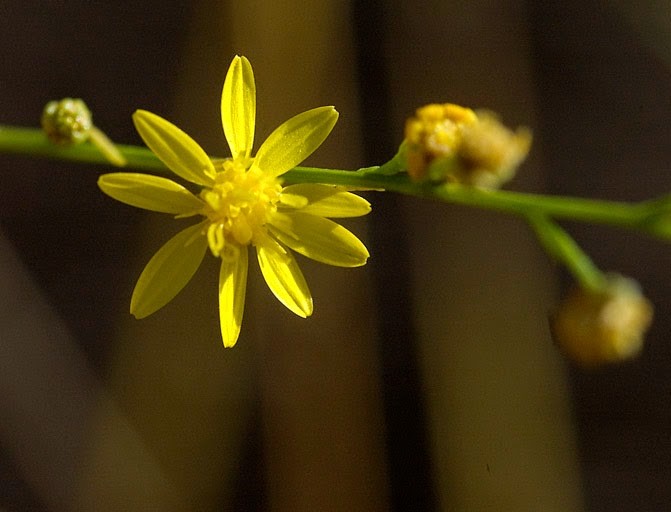 |
| Partridge Pea - Chamaecrista fasciculata |
One of my long-term goals is to convert my lawn into a nature friendly xeriscape. That means planting as many native plants as possible to give back some of the habitat being destroyed by housing and roadways. The
partridge pea is an old favorite flower, one I first spotted in Bosque County about 1985, but I hadn't seen one in many years until recently. Now I see many dozens of them in an as yet undeveloped field near my house and I thought I'd to grow some. Getting seeds for planting has been a bit tricky. I've looked at a lot of seed pods, but there must be a very short time between the pods being too green or being too ripe with seeds already scattered. I've been looking at and gathering pods sporadically for over a month and have less than 30 seeds to show for it.
I had been puzzling for months over a clump of interesting greenery in someone's front yard, trying to identify it. It looked like rosemary, but was too stiff and prickly & certainly didn't smell like rosemary. A few weeks ago the prickly greenery began sprouting tiny purple flowers. and then I saw these plants in the wildflower field which are unkempt versions of the plant I had been so fascinated with. I finally found its name:
Gayfeather,
Texas Liatris, or my favorite,
Blazing Star.
 |
| Gayfeather - Liatris mucronata |
I took a spade with me one day and dug up a few specimens to put in my yard. I wouldn't normally disturb someone's property, but this field seems to serve mostly as a repository for cans, plastic bottles, and almost every kind of trash. I didn't think anyone would miss a few plants. So far the specimens I transplanted are surviving.
When I dug up the gayfeather plants I accidentally got a couple of
Broomweed plants with them.
 |
| Prairie Broomweed - Amphiachyris dracunculoides |
|
I decided to plant them as well, and hope any seeds formed would self-sow in my yard. One plant by itself doesn't look like much, but in quantity they cast a nice yellow glow. Apparently settlers in the 1800s would gather a bunch of these plants and bind one end so they could be used as brooms, hence the common name broomweed. They're part of the Aster family, and up close are quite pretty. I do hope I see them in the yard next summer. Maybe all these wildflowers will find my yard to their liking.





No comments:
Post a Comment